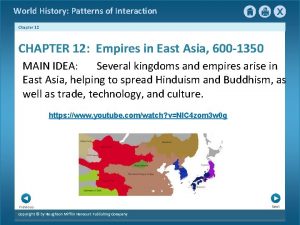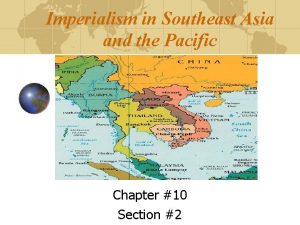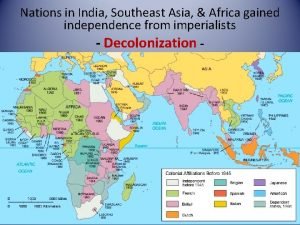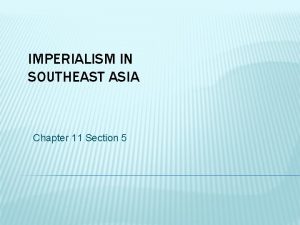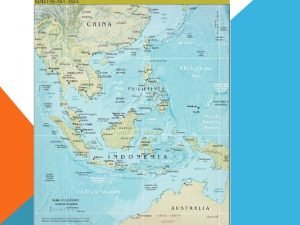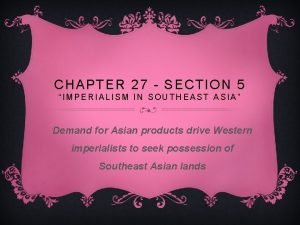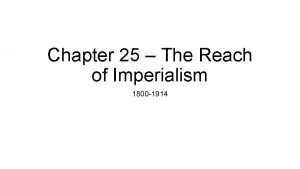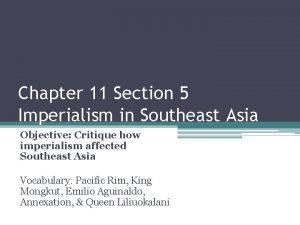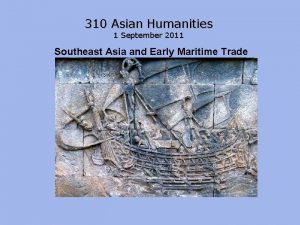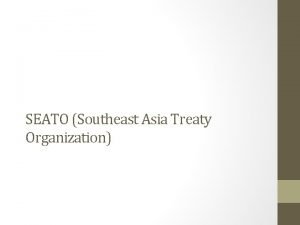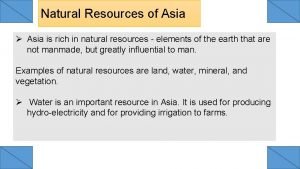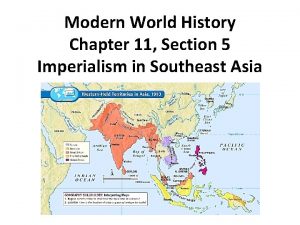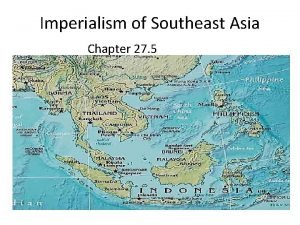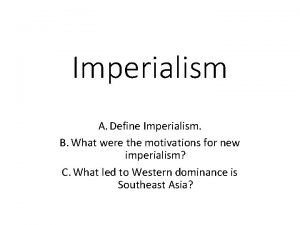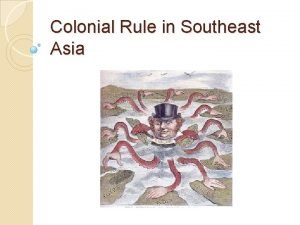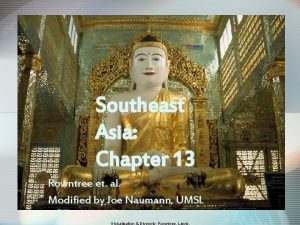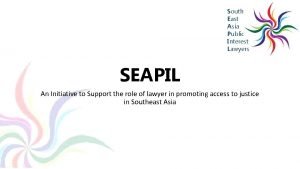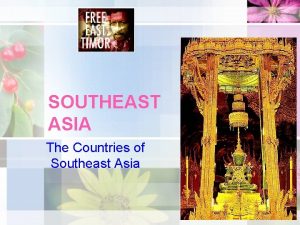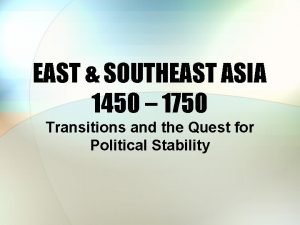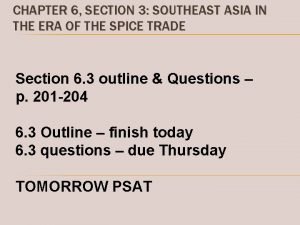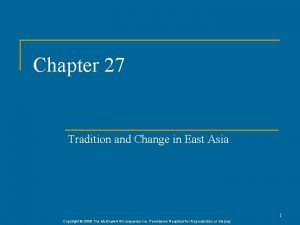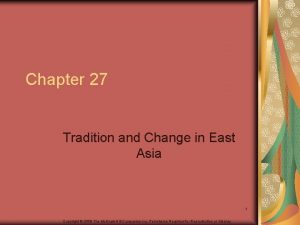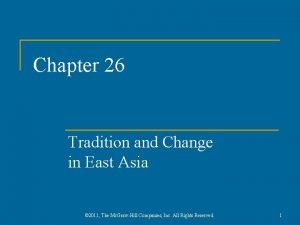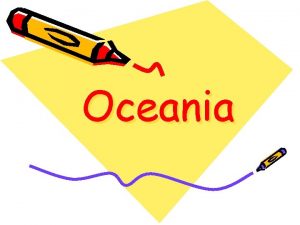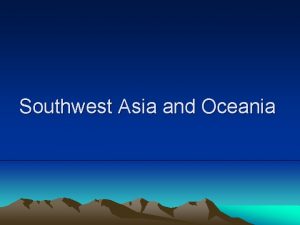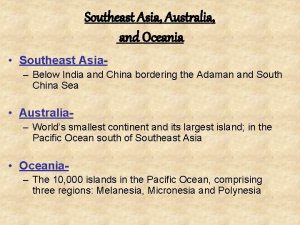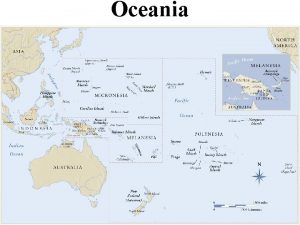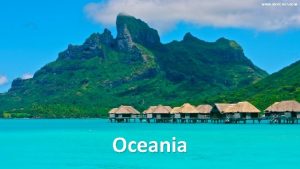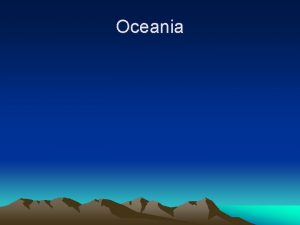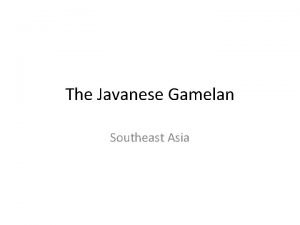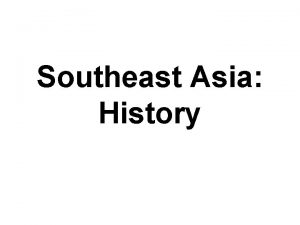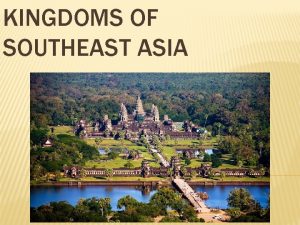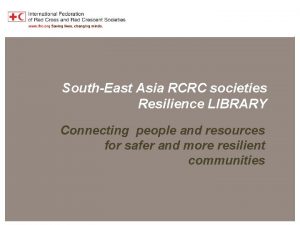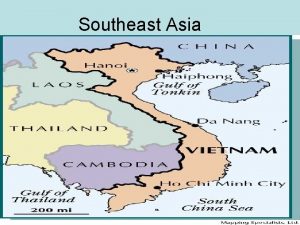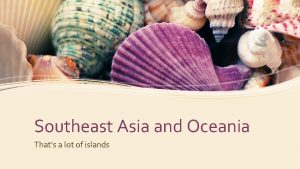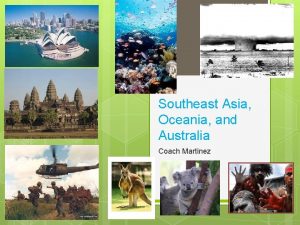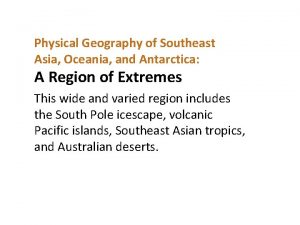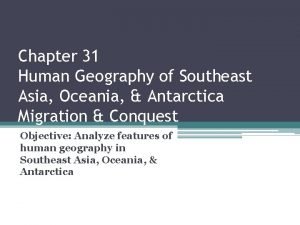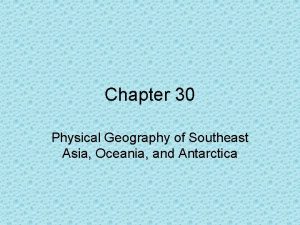East and Southeast Asia and Oceania 1 Where































- Slides: 31

East and Southeast Asia and Oceania 1

Where 2

Where 3

Families Sino-Tibetan Sinitic Tibeto-Burman (probably not a single branch): Newari, Tibetan, Burmese… 4

Families Tai-Kadai Thai Lao … 5

Families Austroasiatic Munda (Santali, Mundari, …) Mon-Khmer (Khmer, Vietnamese, …) Nikobarese 6

Families Hmong-Mien (Miao. Yao) Andamanese (at least two families) 7

Families Austronesian North Taiwan, Hawaii West Madagascar Easter Island South New Zealand NB: + periphery (Surinamese-Javanese, Sri Lanka Malay, etc. ) 8

Families Austronesian 9

Families Австронезийская The largest best-established family in the world Ethnologue: 1254 Glottolog: 1274 Comparative Austronesian Dictionary (1995): 1202 Robert Blust, Ulo Sirk: 825 The only large family which is spoken mostly on islands 3 -10 primary branches in Taiwan + 1 branch outside of Taiwan (Malayo-Polynesian) Tagalog, Malagasy, Malay, Javanese… 10

Structural types within the Austronesian family Philippine type Indonesian (Malay) type East Indonesian type? Oceanic type? Other types? 11

Oceanic languages Basic typological characteristics Relatively small phoneme inventories, yet often with complex vowel sytems Marquesan Analytical tendencies Agglutination closer to isolation 12

Oceanic languages Basic typological characteristics Mostly head marking, but analytical cases in Polynesian languages Mostly accusative alignment, but ergative alignment in Polynesian languages Word order SVO, (SOV), VSO, VOS, TVX prepositions, postposed attributes 13

Oceanic languages Basic typological characteristics Possessive constructions: inalienability, possessive/relational classifiers 14

Oceanic languages Typologically interesting phenomena Transitivization by means of a specific marker (even with typical transitive verbs – extraversive derivation) Tolai (after Lehmann & Verhoeven 2006) 15

Oceanic languages Typologically interesting phenomena Syntactic incorporation / pseudo-incorporation Tonga(Mithun 1984) a. b. Na’e inu ‘a PST drink ABS ‘John drank the kava’ Na’e inu kava PST пить e LNK kava ‘a Sione кава ABS ‘e ERG Sione John Джон ‘John kava-drank’ 16

Oceanic languages Typologically interesting phenomena Multiple expression of negation Lewo (Vanuatu) – 3 markers!!! Also in serial constructions / complex predicates Paamese (Vanuatu) 17

Philippine type Predicate-initial sentences Weak contrast between nouns and verbs Tagalog (Gil 1993: 394) (1) Pinatay ang bangkero PT: PFV-kill NOM boatman The boatman was killed. (2) pulubi ang bumalik beggar NOM AT: PFV-return The one who returned is a beggar. 18

Philippine type Multiple voices Tagalog: at least four voices 19

Philippine type 20

Philippine type Active as a marked voice Is there subject? Ergativity? Symmetrical system? 21

China, Mainland Southeast Asia (Indochina) & beyond Consonant systems are not very rich, but rich vocal systems Often due to complex tonal systems Not only tones, but also other phonetic processes (creaky or breathy phonation or some kind of glottal constriction) Tonogenesis: due to the loss of consonants Kam/Dong (Tai-Kadai) is sometimes thought to have 15 tones 22

China, Mainland Southeast Asia (Indochina) & beyond «Lion-Eating Poet in the Stone Den» - a poem in Classical Chinese which should be read in Modern Chinese as consisting word that differ only in their tones « Shī Shì shí shī shǐ » Shíshì shīshì Shī Shì, shì shī, shì shí shī. Shì shíshí shì shì shī. Shí shí, shì shí shī shì. Shì shí, shì Shī Shì shì shí shī, shì shǐ shì, shǐ shì shí shī shìshì. Shì shí shī shī, shì shíshì. Shíshì shī, Shì shǐ shì shíshì. Shíshì shì, Shì shǐ shì shí shī. Shí shí, shǐ shí shì shí shī, shí shí shī. Shì shì shì. 23

China, Mainland Southeast Asia (Indochina) & beyond Monosyllabic Typically one morpheme = one syllable No morphemes smaller than a syllable Close to the isolating ideal Vietnamese, Classical Chinese are the canons of the isolating type Exception: Munda (polysynthetic) 24

China, Mainland Southeast Asia (Indochina) & beyond Analytical SVO, right branching (with the exception of Sinitic) Mostly accusative alignment (but ergativity in Himalayan languages) 25

China, Mainland Southeast Asia (Indochina) & beyond Areal feature: numeral classifiers (correlates with the optionality of the number category) Standard Indonesian dua ekor buaya ‘two crocodiles’ two TAIL crocodile dua buah ekor buaya ‘two crocodile tails’ two FRUIT tail crocodile Noun classes? Нbut Burmese: 26

China, Mainland Southeast Asia (Indochina) & beyond “Languages without grammar” Word order does not help to distinguish between different roles/grammatical relations Word order mostly correlates with the information structure. Given information (including NPs denoting participants which are already known) is normally omitted. The pervasive role of the context and lexical information in distinguishing between different participants. 27

China, Mainland Southeast Asia (Indochina) & beyond “Languages without grammar” Lao 28

China, Mainland Southeast Asia (Indochina) & beyond “Languages without grammar” No obligatory grammatical categories such as Number, Tense, etc. (grammatical markers are optional) The same items may appear as full-fledged lexemes in some contexts and as grammatical markers in other contexts without overt traces of grammaticalization In Khmer, the verb ‘give’ can be used as a marker of benefactive, causative or introduce an adverbial clause 29

China, Mainland Southeast Asia (Indochina) & beyond “Languages without grammar” Parts-of-speech often appear in unexpected functions, but not like in the Philippines. Widespread conversion? 30

China, Mainland Southeast Asia (Indochina) & beyond “Languages without grammar” Li, Thompson: Topic-prominence: Subject is not as important for the grammar as Topic is. Mandarin Chinese 31
 Oceania in 1984
Oceania in 1984 Colonial encounters in asia africa and oceania
Colonial encounters in asia africa and oceania Mainland southeast asia
Mainland southeast asia Chapter 12 section 5 kingdoms of southeast asia and korea
Chapter 12 section 5 kingdoms of southeast asia and korea Imperialism in southeast asia and the pacific
Imperialism in southeast asia and the pacific Southeast asia model
Southeast asia model Southwest asia landforms
Southwest asia landforms Is india southeast asia
Is india southeast asia Imperialism in southeast asia chapter 11 section 5
Imperialism in southeast asia chapter 11 section 5 Southeast asia climate
Southeast asia climate Chapter 27 section 5 imperialism in southeast asia
Chapter 27 section 5 imperialism in southeast asia Chapter 25 lesson 2 empire building in africa
Chapter 25 lesson 2 empire building in africa Lesson 1 physical geography of southeast asia
Lesson 1 physical geography of southeast asia Imperialism in southeast asia chapter 27 section 5
Imperialism in southeast asia chapter 27 section 5 Southeast asian alphabets
Southeast asian alphabets Seato dissolved
Seato dissolved Malaysia rich in natural resources
Malaysia rich in natural resources Chapter 11 section 5 imperialism in southeast asia
Chapter 11 section 5 imperialism in southeast asia Chapter 27 section 5 imperialism in southeast asia
Chapter 27 section 5 imperialism in southeast asia Define imperialism
Define imperialism Colonial rule in southeast asia
Colonial rule in southeast asia Spice t chart
Spice t chart Sea roads as a catalyst for change southeast asia
Sea roads as a catalyst for change southeast asia Countries in southeast asia
Countries in southeast asia Countries in southeast asia
Countries in southeast asia Southeast asia customs lawyers
Southeast asia customs lawyers Insular southeast asia
Insular southeast asia Southeast asia 1450 to 1750
Southeast asia 1450 to 1750 In 1500 mainland southeast asia was a relatively
In 1500 mainland southeast asia was a relatively Chapter 27 tradition and change in east asia
Chapter 27 tradition and change in east asia Chapter 27 tradition and change in east asia
Chapter 27 tradition and change in east asia Chapter 26 tradition and change in east asia
Chapter 26 tradition and change in east asia



